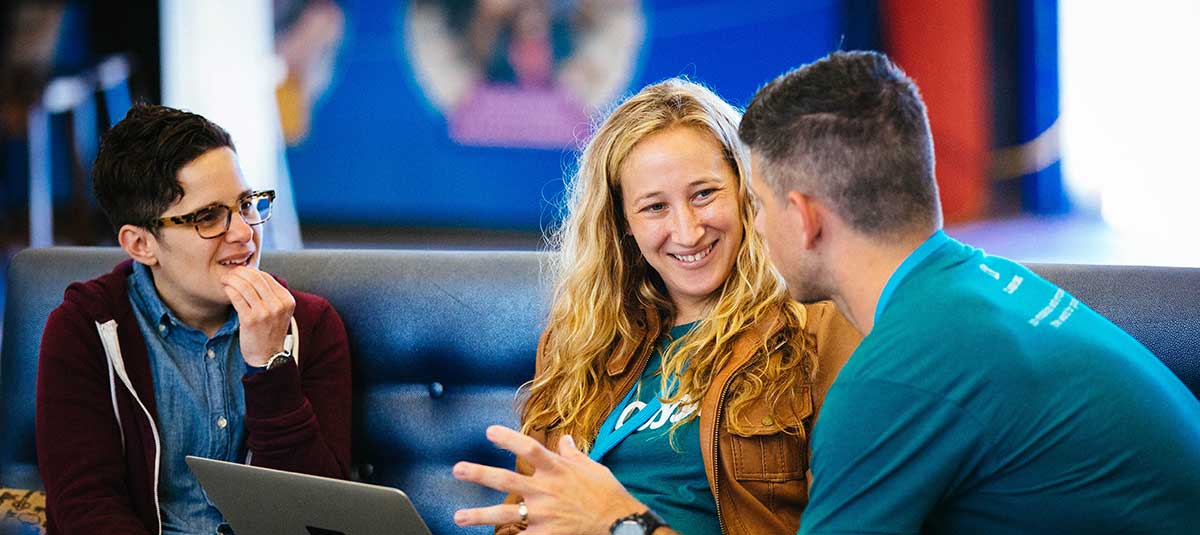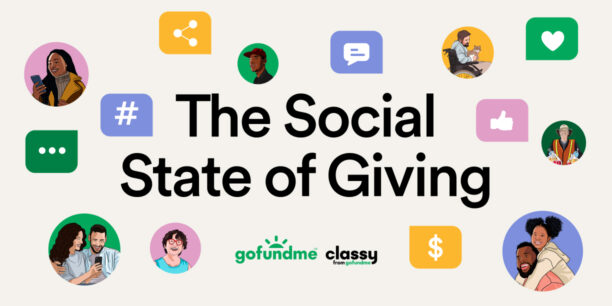How Social Innovation Creates Solutions to World Hunger

This is a guest blog by Ertharin Cousin, the Executive Director of the World Food Programme. This year, Ertharin joins us on the esteemed Leadership Council, voting alongside other industry leaders to determine the final 10 Classy Award Winners.
Nine months ago, world leaders made a historical and momentous decision. At the United Nations in New York, representatives of almost every nation in the world stood in solidarity with our planet’s poorest and most vulnerable people. In this time of ever-increasing crisis and conflict, leaders unanimously agreed on 17 Global Goals for Sustainable Development. For the first time in history, this decision set a date to end hunger and poverty for everyone, everywhere by 2030.
This task to achieve a “Zero Hunger” world is ambitious, yes. But it is also a very achievable task, with targeted investments and innovations.
The truth is, ending hunger is not a pipe dream. The goal of Zero Hunger is based on both hard science and hard-won progress worldwide. When we take population increases into account, approximately 2 billion people have been freed from hunger since the 1990s. In fact, 72 countries in almost every region of the world met the Millennium Development Goal target of halving hunger by 2015. Thanks to these efforts, billions of people can now access sufficient food for a healthy and productive life.
Unfortunately, we must acknowledge that far too many people are still left behind. Some 795 million people, about 2.5 times the population of the United States, endure hunger each and every day. Lack of access to nutritious food particularly during the critical period of zero months to two years limits a child’s physical and mental growth potential, resulting in stunting. On average, 1 in 4 children around the world is affected by preventable yet irreversible chronic malnutrition, or stunting. These children, denied access to the right nutrition will perform less in school and—ultimately—earn fewer dollars throughout their lifetime.
Meeting our collective Zero Hunger commitments demands we urgently increase our investment in hunger education efforts. The evidence demonstrates that if eradication efforts only continue at their current pace, not only will we fail to meet our Zero Hunger Goal, 650 million people remain hungry in 2030. We cannot continue to systematically leave so many in this generation and the next behind.
The good news is that today, we have the technology, science, know-how, and political willpower to address the challenges of availability and access to nutrition and food and—as a result—create solutions to world hunger.
Leveraging advances in science, technology, and data analytics can transform how the world tackles hunger, just as it has transformed—even disrupted—many other sectors. We must effectively harness and accelerate the scaling up of these relevant innovations.
For example, in a world where 97 percent of people have access to mobile phones, we must ask ourselves how we can harness this new connectivity, whether as a financial management or knowledge management tool, to empower people to improve their food and nutrition security. Can this same technology give people faster and more appropriate access to nutrition and hunger solutions during times of crisis?
The answer is yes.
Today in Haiti, we are doing just that for poor Haitians affected by the El Niño drought.
In fact, new sources and data applications rapidly increase both our knowledge of needs while simultaneously enabling evidence-based decision-making to ensure we provide support faster and more efficiently. When fully incorporated into our work, accurate and timely data will increase our ability to meet beneficiary needs for humanitarian assistance more effectively, while transforming the way we provide assistance in the future.
When we consider the massive potential of technology and innovation, there is no question that successfully identifying—and applying—more innovative tools will rapidly quicken the pace to realizing Zero Hunger, putting the achievement of sustainable development goals on an affordable trajectory.
How the World Food Programme Innovates to Tackle Food Loss
As the world’s largest humanitarian agency fighting hunger worldwide, we serve about 80 million of our planet’s most vulnerable people, living in 82 countries worldwide. Entirely funded by voluntary contributions, we look to possibilities from innovation to improve not only our effectiveness, but also the efficiency of our work empowering poor and marginalized people around the world to achieve Zero Hunger.
For example, recognizing that some 70 percent of poor people live in rural areas and mostly rely on small farming, WFP introduced a new program enabling family farmers to reduce costly post-harvest losses. In some developing countries, smallholder farmers regularly lose 40 percent of their harvest because of inadequate post-harvest storage practices. Consequently, too many farmers often sell their produce immediately after harvest—at a time when purchase prices are very low due to high supply, only to buy back similar commodities or produce for consumption a few months later at much higher prices.
Now with better storage, farmers sell later in the season, farmers win first receiving higher prices by selling into the market when demand is greater while also providing food for their family throughout the season.
Tackling food loss directly represents not only an immediate way of reducing hunger, it also offers a way of improving livelihoods and increasing financial resources. Food loss costs farmers in sub-Saharan Africa alone some $4 billion each year. Imagine the possibilities when farmers are able to protect their harvest.
In Uganda, WFP enabled farmers to purchase low-cost silos and access storage training. The project has been tremendously successful. Results demonstrated that farmers achieved a 98 percent reduction in storage-related post-harvest losses. Already, about 40,000 farmers have benefited from this project. We are now rolling the initiative out to other countries, including Sudan, Rwanda, and Tanzania.
Supporting smallholder farmers is crucial to meeting increasing global demand for quality nutritious food. Despite their often low yields, smallholders produce over 80 percent of the food consumed by the developing world. With the right tools, their potential for increased production is immense. Enabling smallholders to reap the full benefits of their work is an important step in creating solutions to world hunger.
When extreme events such as earthquakes, typhoons, or conflict strike, the first priority is to understand the full extent of the situation and the needs of affected people. Traditionally after a shock or crisis we performed our analyses through time-consuming in-person surveys, which were expensive to administer and oftentimes dangerous for both those answering and asking the questions.
With cellphone penetration in developing countries now reaching approximately 90 percent, WFP tested and then pioneered the use of mobile phone-based surveys to remotely assess and ask people about their needs. In more than 15 countries, the approach has proved a reliable, accurate, fast, and affordable way to collect data at-scale. The method was particularly successful in the unpredictable and unprecedented response operations to the West Africa Ebola virus disease outbreak.
Just like the post-harvest loss initiative, we are now working to take this innovation—which we call mVAM—to scale. Our plan is to roll out the approach in 30 countries, including those of our most difficult emergency operations. As we manage and overcome the remaining key challenges, the opportunity for near real-time communication and interaction between us and the people we serve is game-changing.
Dynamic Organizations Accelerate Innovation
Successfully developing, launching, and scaling such transformational innovations requires an environment that encourages and enables innovative thinking. Our innovation must promote a lean startup approach, facilitate rapid prototyping and user-testing, while—crucially—encouraging a culture that accepts that not all innovations may succeed.
To meet these requirements, WFP launched an Innovation Accelerator in Munich, Germany. With support from the German government, we now possess the organizational capacity to systematically support innovation development and scale-up. The Innovation Accelerator offers hands-on support to innovators, space for experimentation, and a mechanism to connect WFP’s innovators with entrepreneurs and private sector companies drawing on their skills and leveraging their expertise. The Innovation Accelerator creates an environment in which innovators receive the mentoring, coaching, and technical training, needed to challenge and further advance their ideas.
WFP’s recently launched smartphone crowdfunding application ShareTheMeal represents one of the ideas scaled up by the Innovation Accelerator. Harnessing the power of mobile-phone usage, ShareTheMeal allows users to provide a meal for a child in need for just 50 cents a day. Since its launch six months ago, more than 500,000 people across the world have shared more than 5 million meals with children in Jordan, Syria, and Lesotho. Mobile technology allows anyone, anywhere to contribute directly to solutions to world hunger.
Although there is much to be done to eliminate hunger in the next 15 years, it can be done. All of the conditions are in place: the goals, the technology, and the know-how. To make Zero Hunger a reality, we need to sustain the political will required to invest and deploy the innovations where they are needed most.
Ertharin Cousin is the Executive Director of the World Food Programme (WFP). She leads WFP in meeting urgent food needs of hungry people worldwide while championing longer-term solutions to food insecurity and hunger. See Ertharin’s full bio and the rest of the Leadership Council.

Join Us at the 2019 Collaborative
Subscribe to the Classy Blog
Get the latest fundraising tips, trends, and ideas in your inbox.
Thank you for subscribing
You signed up for emails from Classy
Request a demo
Learn how top nonprofits use Classy to power their fundraising.



